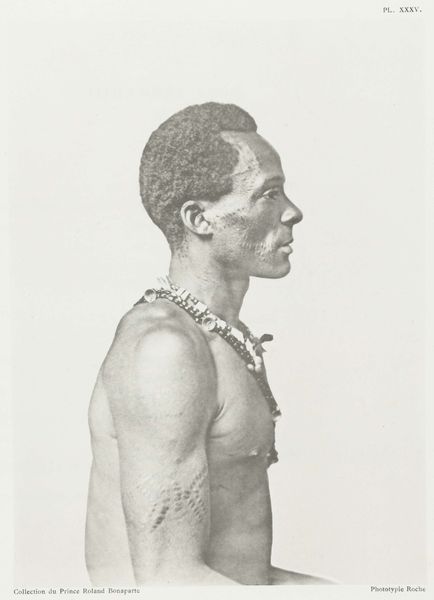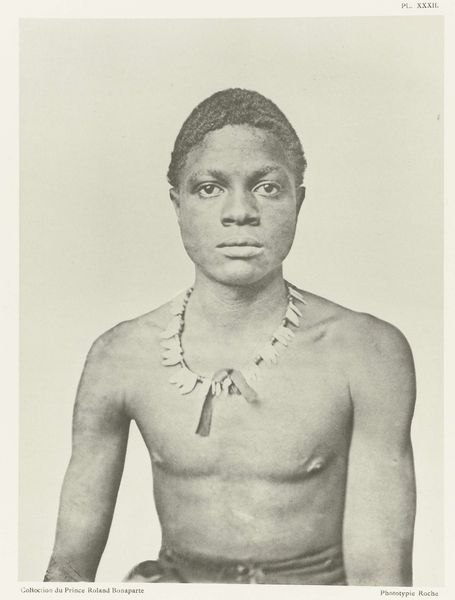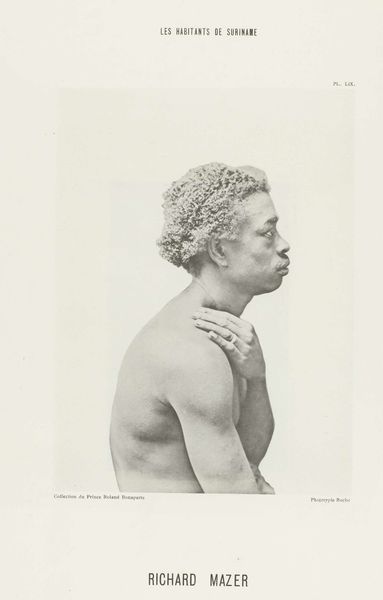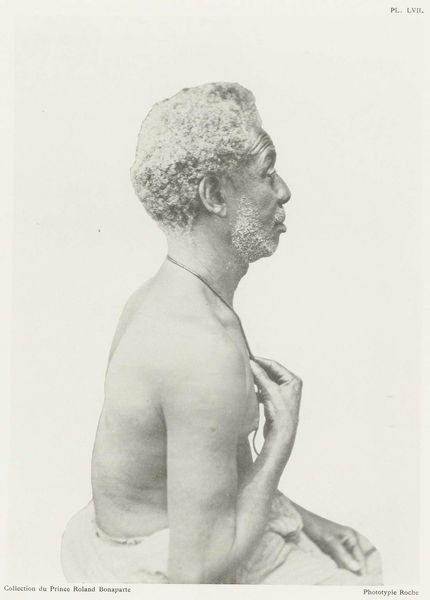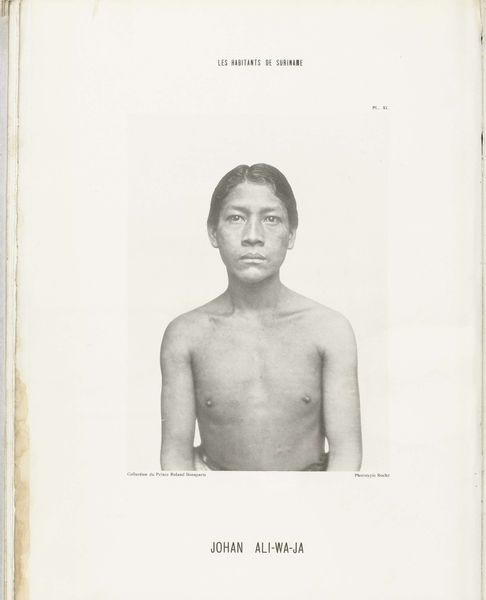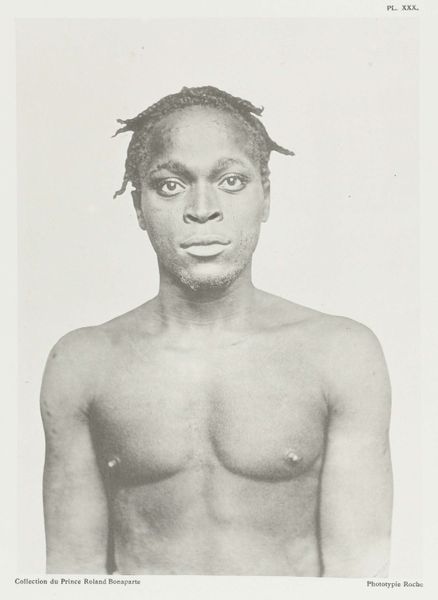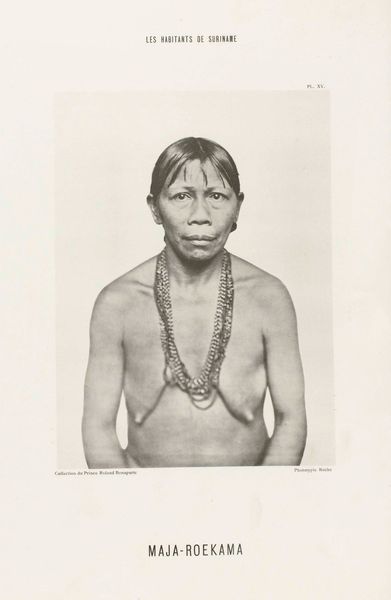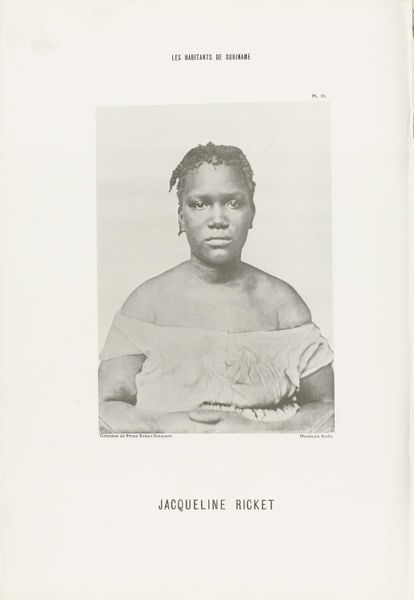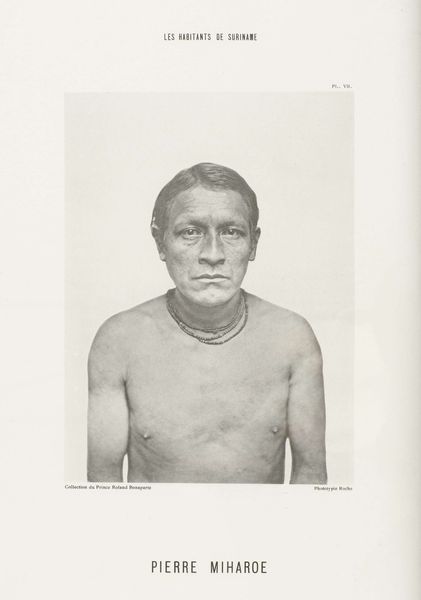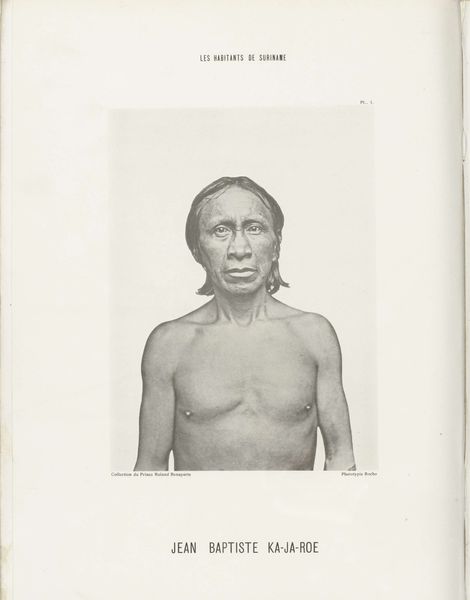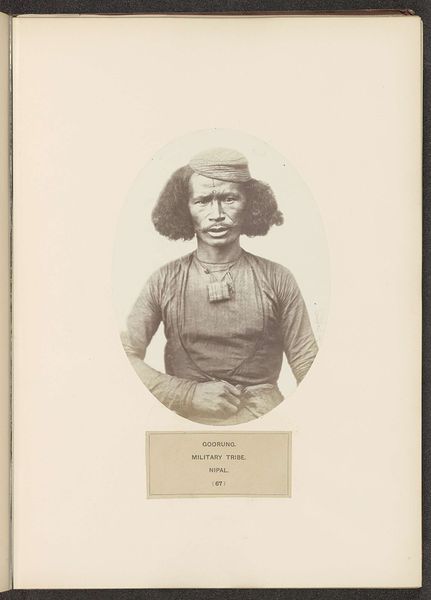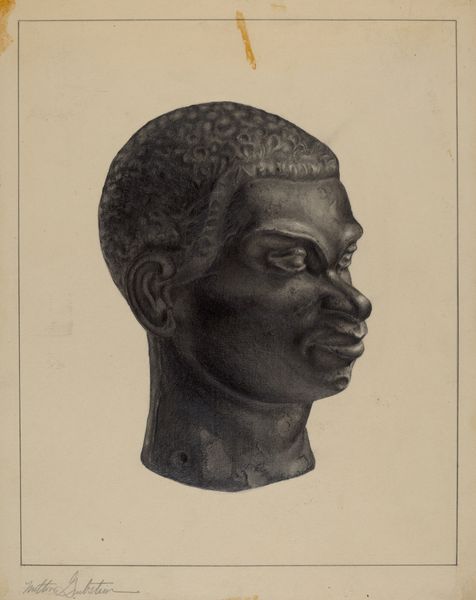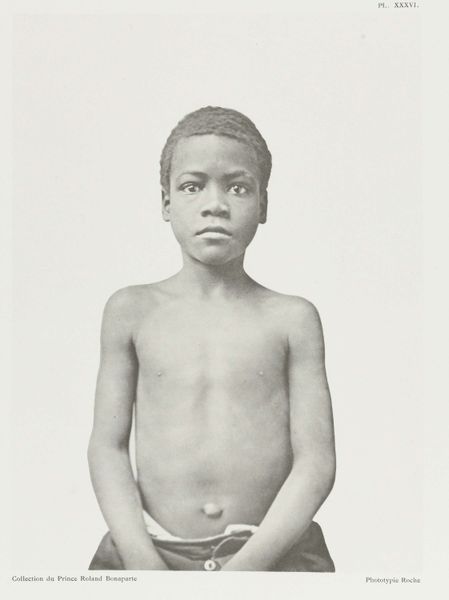
photography, albumen-print
#
portrait
#
african-art
#
portrait
#
photography
#
albumen-print
Dimensions: height 233 mm, width 174 mm
Copyright: Rijks Museum: Open Domain
Curator: This albumen print, entitled "Portret van Kwamina A-Pé-Sé," was created between 1883 and 1884 by Friedrich Carel Hisgen. Editor: Striking. Immediately, I feel a deep stillness and sense of respect emanating from the subject's profile. Curator: Hisgen, a colonial photographer, captured this portrait of Kwamina A-Pé-Sé in what was then the Dutch Gold Coast, now Ghana. We should examine this work acknowledging the historical context of colonial power dynamics. These portraitures served as both scientific document and spectacle. Editor: Absolutely. It's difficult to look at any historical photograph, especially of indigenous peoples, without reflecting on the complicated and often exploitative circumstances of its creation. Yet, something in his gaze feels…almost defiant? Curator: It’s in the set of his jaw and the unwavering line of his neck. What do you make of his adornment? The shell necklace. Editor: I wonder what significance the shells held for Kwamina. Was this personal ornamentation, a status symbol, or even something requested by the photographer to "authenticate" the sitter for a European audience? It almost feels talismanic against the clinical gaze of the camera. Curator: Exactly, the symbolism could operate on multiple levels. Looking through a lens sensitive to the power structures in place, the photographer imposes their vision while the subject asserts autonomy however subtle or unconscious. Editor: The stark simplicity of the image intensifies that feeling. It throws all focus onto the person, onto Kwamina's very being. The clinical backdrop throws the detail of skin and jewelry into sharp contrast. You know, despite the constraints, there's an intimacy that sneaks in. Curator: It is in those subtleties that we can look beyond mere historical record and discover shared humanity across time. The cool tonality invites a contemplative state. Editor: You're right. Looking at this again, I’m less aware of the apparatus and more in dialogue with Kwamina as a presence—challenging our contemporary perspectives. Curator: Hopefully, thoughtful art encounters like this enable a more critical approach to visual history and representations. Editor: To allow art, even a captured image, to spark vital questions rather than settle for prescribed narratives feels essential. Thanks for making that clear, it helped a lot.
Comments
No comments
Be the first to comment and join the conversation on the ultimate creative platform.
